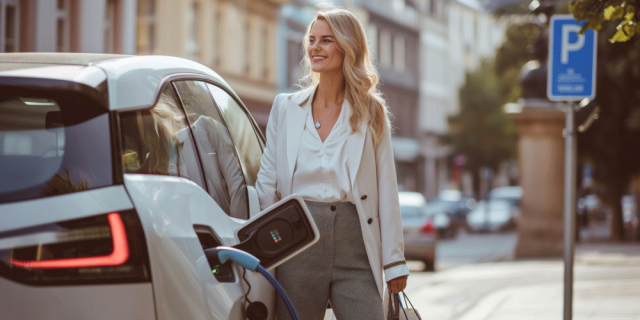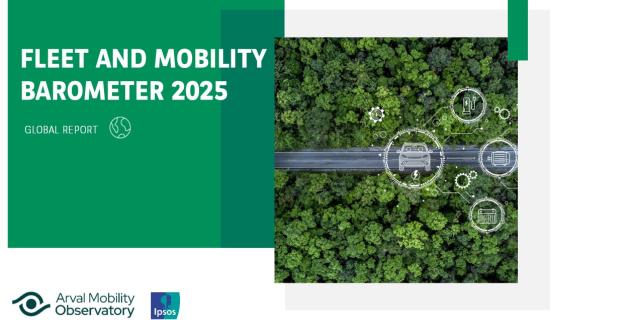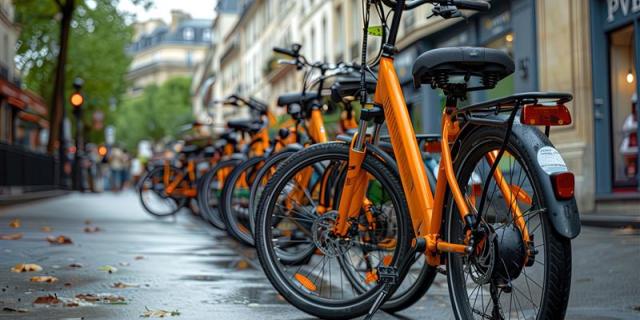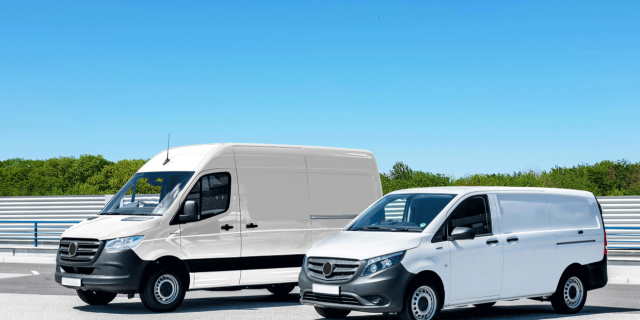Vehicle manufacturers' electrification strategy
Paris, 4th of October 2021
Last July, the European Union proposed a zero-emissions target for new cars by 2035, an effective ban on the sale of new petrol and diesel cars from 2035. The European Commission also proposed a 55% cut in CO2 emissions from cars by 2030 versus 2021 levels and a 100% cut in CO2 emissions by 2035. In parallel, several countries have already announced accelerated timelines for the sale of Internal Combustion Engines (ICE) to be banned in 2030 or 2035. The continued acceleration of electrification is putting a significant pressure on vehicle manufacturers (OEMs) to meet these targets and is spurring the development of electrification strategy for the coming years.
But what kind of decisions and investments have they already decided?
- BMW: 30 billion euros for their electrification plan
They will continue to invest more than 30 billion euros in research and development by 2025.They expect that BEVs will account for 50% of their global sales by 2030 and that BEVs will be available for 100% of today’s market segments. Indeed, they want to sell 10 million BEVs within the next ten years. The target is that 90 % of their segments are covered by at least one BEV by 2023. In order to reach this target, BMW has invested 400 million euros in the Dingolfing plant to upgrade its plant equipment in Germany and will discontinue production of ICE motors. The Dingolfing plant is BMW’s largest production facility in Europe and will become the main force for the production of BMW’s electric models.
- Mercedes Benz: the entire product range electrified by 2022
By 2022, Mercedes Benz will have BEV in all segments the company serves. From 2025 onwards, all newly launched vehicle architectures will be electric-only. To facilitate this shift, Mercedes- Benz is unveiling a comprehensive plan which includes significantly accelerating R&D. In total, investments into BEVs between 2022 and 2030 will amount to more than 40 billion euros. Last year’s targets were based on the assumption of selling a 25% share of hybrid and electric vehicles by 2025. Today’s revision is based on an assumed xEV (BEVs and PHEVs) share of up to 50% by 2025 and a market scenario for new car sales which in essence has switched to fully electric by the end of the decade. Investments into combustion engines and plug-in hybrid technologies will drop by 80% between 2019 and 2026. Mercedes-Benz will need a battery capacity of more than 200 Gigawatt hours and plans to set up eight Gigafactories for producing cells, together with its partners around the world. This is in addition to the already planned network of nine plants dedicated to building battery systems. Next generation batteries will be highly standardised and suitable for use in more than 90% of all Mercedes-Benz cars and vans while being flexible enough to offer individual solutions to all customers. By 2039, their ambition is a completely carbon neutral new car fleet.
- Ford: Electrification Boost Plan
Last May, Ford outlined plans to boost investment into its electrification efforts. Indeed, Ford will focus on the rollout of its future electric vehicle models, where it expects 40% of its global vehicle volume to be all-electric by 2030 and will raise planned electrification spending to $30+ billion by 2025 (up from its prior target of $22 billion), including development of IonBoost batteries. In Europe, 100% of its passenger car sales will be all-electric by 2030 (two-thirds of its commercial vehicle sales to be all-electric or plug-in hybrid). By mid-2026, BEVs or PHEVs versions of all models for passenger vehicles will be proposed and by 2024 for commercial vehicles.
- General Motors: investments of 35 billion dollars
General Motors (GM) targets to achieve an annual sales of 1 million electric vehicles by 2025.
US automaker GM, announced in June that it will increase its investment in electric and automated driving vehicles from $27 billion to $35 billion by 2025, as previously leaked. GM is accelerating plans to build two new battery cell manufacturing plants in the United States in the middle of the decade to complement the Ultium Cells LLC plants under construction in Tennessee and Ohio. GM is already currently building a battery plant with LG Energy Solution in northeast Ohio, and Ultium Cells, the joint venture between the two groups, plans to build a second plant in Spring Hill in the U.S. state of Tennessee. The $2.3-billion-factory is scheduled to open in 2023. The battery initiative is part of GM’s plan to completely give up the internal combustion engine by 2035. As an interim step, the manufacturer is aiming for a total of 30 purely electric models worldwide by 2025 and electric car sales of 40%.
- Hyundai-KIA: 23 electrified models in 2025
Globally, Hyundai will launch more than 12 additional BEV models in the next four years. Michael Cole, president and CEO of Hyundai Motor Europe, said “At Hyundai, we are already future-proofing our business. 90 % of our line-up is less than two years old. This means more modern and efficient engine technology. Over the next 10 years, we will strongly focus on zero emission mobility solutions. This includes Fuel Cell vehicles and BEVs. We are in the good position to have a range of zero emission vehicles available for our European customers. It is our ultimate goal to achieve a global EV market share of 8 to 10 per cent by 2040. Already now, we are leading in the field of zero emission mobility. By 2025, we plan to produce over 560,000 battery electric vehicles globally, which will make us one of the biggest providers of zero emission mobility” (cf. our interview with Mr. Michael Cole, CEO of Hyundai Motor Europe).
Hyundai currently offers 15 electrified models and derivatives in Europe. Of these, 11 were newly-launched or enhanced in 2020, including the Kona Electric BEV. Kia will sell 500,000 units of 11 models by 2026. Of particular importance in strengthening its position in the EV field is the development of its E-GMP (Electric-Global Modular Platform), a dedicated battery electric vehicle (BEV) platform, which is shared among the Hyundai, Genesis and Kia brands.
- Jaguar Land Rover: electrification is also a luxury carmaker target
The British carmaker presented its strategy in February. It aims to offer every model series with a purely electric drivetrain by 2030. Annual commitments of circa £2.5bn will include investments in electrification technologies and the development of connected services. According to the plan, Jaguar will become a purely electric luxury carmaker by 2025. The new electric vehicles will be based on a stand-alone platform.In the next five years, Land Rover will welcome six pure electric variants as it continues to be the world leader of luxury SUVs through its three families of Range Rover, Discovery and Defender. The first all-electric variant will arrive in 2024. Both Jaguar and Land Rover will offer pure electric power by 2030. By this time, in addition to 100% of Jaguar sales, it is anticipated that around 60% of Land Rovers sold will be equipped with zero tailpipe powertrains. Jaguar Land Rover’s aim is to achieve net zero carbon emissions across its supply chain, products and operations by 2039.
- Renault: 65 % of purely electric vehicles by 2025
Renault has the following target: to launch 10 new electric vehicles, bringing its sales mix to 65% electric by 2025, and 90% electric by 2030. By 2030, Renault and its alliance partners, Nissan and Mitsubishi, will be producing one million EVs globally a year, up from the 200,000 they made in 2020. Renault will enlarge its range launching two new electric B-segment cars in 2023 – like the new Renault 5 – and 2025, along with two new D-segment large models in 2023 and 2024.
- Stellantis: five gigafactories to support the demand
During the Stellantis EV Day 2021 last July, the company presented its electrification plans. The group intends to invest more than €30 billion through 2025 in electrification and software development, including equity investments made in joint ventures to fund their activities to offer "best-in-class fully electrified solutions" over all 14 brands. The Stellantis electrification roadmap encompasses the entire value chain. The company's EV battery sourcing strategy is to secure more than 130 gigawatt hours (GWh) of capacity by 2025 and more than 260 GWh by 2030. The EV battery and component needs will be met with a total of five "gigafactories" in Europe and North America, completed with additional supply contracts and partnerships to support total demand. They are targeting over 70 % of sales in Europe and over 40 per cent in the United States to be low emission vehicle (LEV) by 2030. All 14 brands are committed to offering best-in-class fully electrified solutions.
- Toyota: 70 electric cars including 15 fully electric vehicles by 2025
Beginning of September Toyota’s Chief Technology Officer Masahiko Maeda revealed the company's battery development and supply strategy "toward carbon neutrality. The plan is to significantly increase sales of electrified vehicles, reaching about 8 million units per year by 2030 (including roughly 2 million all-electric or hydrogen fuel cell vehicles). That's on top of the 18.1 million hybrids sold since the first-generation Prius in 1997. To achieve the goal, Toyota will invest about $13.6 billion by 2030 in the development of a battery supply system and research and development. Two-thirds of the amount will fall on the battery supply system, which will consist of a total of 70 production lines (roughly 200 GWh annually by 2030).
Earlier this year, Toyota announced an electric vehicle strategy that will see it release 70 electric cars globally by 2025, including 15 fully-electric vehicles as well as hybrids and hydrogen-powered models. By around 2025, every model in the Toyota and Lexus line-up around the world will be available as a dedicated electrified model or have an electrified option.
- Volkswagen: by 2030, the share of BEV will rise 50%
By 2030, the Group plans to reduce its carbon footprint per car by 30% over its lifecycle (vs. 2018), in line with the Paris Agreement. In the same timeframe, the share of battery-electric vehicles is expected to rise to 50%, while in 2040, nearly 100% of all new Group vehicles in major markets should be zero-emission. By 2050 at the latest, the Group intends to operate fully climate neutral. Volkswagen has already earmarked €73 billion for future technologies from 2021 through 2025, representing 50% of total investments. The share of investments into electrification and digitalisation will be further increased. Volkswagen Group plans to establish a controlled battery supply chain by setting up new partnerships and tackling all aspects from raw material to recycling. The goal is to create a closed loop in the battery value chain as the most sustainable and cost-effective way to build batteries. In order to reach its goal, Volkswagen Group is advancing battery competence and reducing complexity. To that extent, it is introducing one unified battery cell format with up to 50% cost reduction and up to 80% use cases by 2030. Six giga factories in Europe with a total production capacity of 240 GWh by 2030 will help to secure battery supply. The first location in Skellefteå, Sweden, will be operated by Northvolt AB. Volkswagen Group just invested an additional €500 million in its premium cell partner and works with Northvolt towards starting production in 2023. For the second location in Salzgitter, Volkswagen Group yesterday signed an agreement with Chinese cell specialist Gotion High-Tech as its technological partner for a start of production in 2025. Together, both partners will develop and industrialise the volume segment of the unified cell in the German plant. As a third location, Volkswagen Group intends to make Spain a strategic pillar of its electric campaign and is considering to establish the entire value chain of electric cars in that country. As part of a larger transformation program, the localisation would secure supply for the planned BEV production in Spain. Volkswagen Group verifies the option for a giga factory together with a strategic partner. In its final expansion stage at the end of the decade, the plant is intended to have a yearly capacity of 40 GWh hours. It is also envisaged that the Group’s Small BEV Family will be produced in Spain from 2025. The final decision will depend on the general framework and state subsidies.
- Volvo: the first BEV launched this year
All new Volvos from 2019 will have an electric motor. By 2025, the company aims to have sold one million electrified cars and it will launch five fully electric models between 2021 and 2025.By 2025, it aims for 50 per cent of its global sales to consist of fully electric cars, with the rest hybrids. By 2030, every car it sells should be fully electric. Volvo Cars will introduce a range of electrified cars over the coming years, and there’ll be something for everyone. The latest generation of Volvos have been designed from the outset for electrification and the choices will include fully electric cars and plug-in hybrid models, as well as new mild-hybrid models. Their first fully electric car, the XC40 Recharge, was launched earlier this year and will be followed by a range of fully electric cars in the coming years.
All OEMs have embraced electrification of their portfolio, which confirms that electrification is no longer an option. Nevertheless, even if the wish and strategy are there they have to face some delays in production due to the semiconductor shortage. How long will it stay and what will be the final impact on volumes? 2022 will be certainly a difficult year.











